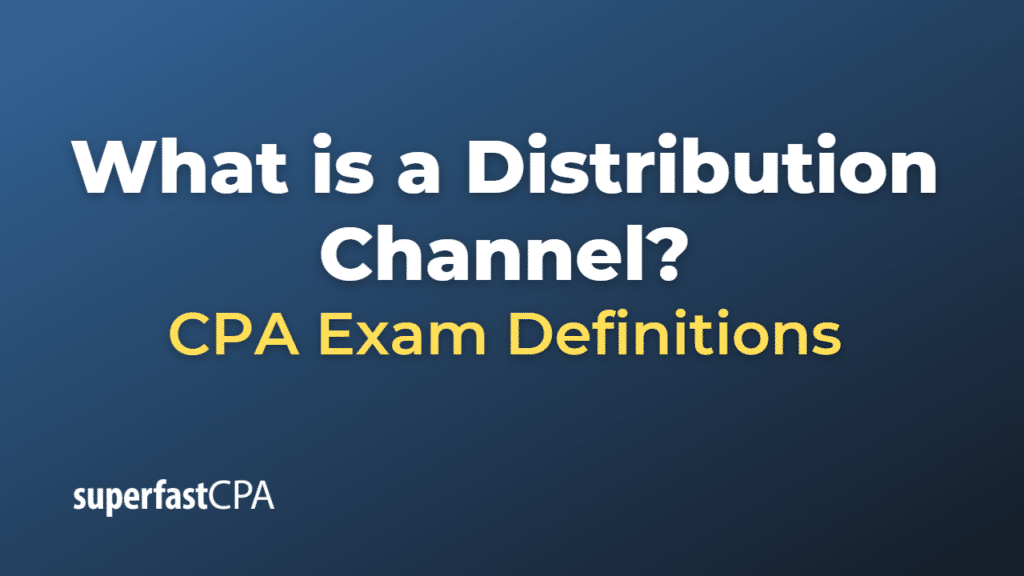Distribution Channel
A distribution channel, in the context of marketing and business, refers to the path or route through which goods and services travel from the producer or manufacturer to the end user or consumer. This channel includes both physical and virtual pathways, and it involves several intermediaries like wholesalers, distributors, retailers, and the internet.
There are various types of distribution channels, and they can typically be classified into direct and indirect channels:
- Direct Distribution Channels: In a direct distribution channel, the manufacturer sells the product directly to the consumer. This could be through a physical storefront owned by the manufacturer, a manufacturer’s website, or direct selling to consumers through marketplaces.
- Indirect Distribution Channels: Indirect channels involve intermediaries between the manufacturer and the consumer. They can include:
- One-level Channel: This involves one selling intermediary such as a retailer. For example, a manufacturer sells to a retailer like Walmart, who then sells to the consumer.
- Two-level Channel: This includes two intermediaries. Typically, this might involve a wholesaler and a retailer. The manufacturer sells to the wholesaler, the wholesaler sells to the retailer, and the retailer sells to the consumer.
- Three-level Channel: This involves three intermediaries: a jobber, a wholesaler, and a retailer.
Each distribution channel can have its own benefits and challenges. Direct distribution allows manufacturers to have direct contact with customers, which can lead to better understanding of customer needs and higher profit margins, but it may limit the reach. Indirect distribution, on the other hand, allows manufacturers to reach a broader audience, but it can reduce their control over the product and decrease profit margins.
Choosing the right distribution channel is a strategic decision that can significantly impact a company’s growth and success. Factors such as the nature of the product, company’s resources, target market, and competitive environment should be considered while deciding the distribution channel.
Example of a Distribution Channel
Let’s look at an example of both direct and indirect distribution channels:
- Direct Distribution Channel: Dell Inc., a well-known computer technology company, is a good example of a direct distribution channel. Dell sells its computers and other products directly to its customers, mainly through its website. By doing this, Dell eliminates the need for retailers or other intermediaries, which allows them to have more control over the sales process and potentially increase their profit margins.
- Indirect Distribution Channel: A classic example of an indirect distribution channel can be seen in the consumer packaged goods industry. Let’s take the example of Procter & Gamble (P&G). P&G manufactures a wide variety of consumer goods, such as Tide laundry detergent. P&G doesn’t sell this product directly to consumers. Instead, they use a two-level distribution channel:
- First, P&G sells Tide to wholesalers or distributors.
- These wholesalers then sell the product to various retailers, including grocery stores and online marketplaces.
- Finally, these retailers sell Tide to the end consumers.
In this case, P&G benefits from the extensive reach that these intermediaries offer, which allows their products to be widely available to consumers in numerous locations and platforms. However, they also have to account for the fact that each intermediary needs to mark up the price in order to make a profit, which can affect the final price paid by the consumer.
Remember, these are simplified examples. Real-world distribution channels can be more complex, involving multiple types of intermediaries and hybrid strategies. For instance, many manufacturers now use a combination of direct and indirect channels, selling both through their own websites and through retailers or other partners.













